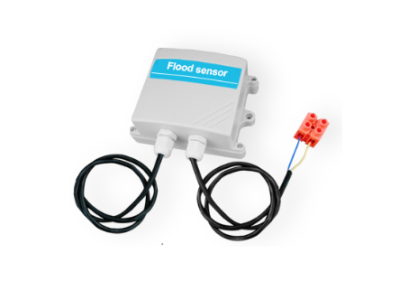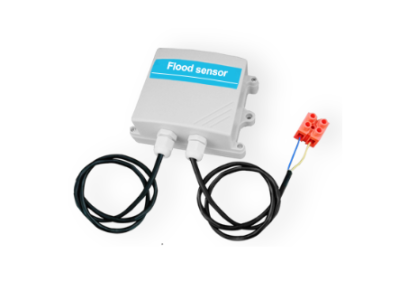
How will soil sensors change agriculture?
Water level sensors are devices that measure the level of water in various applications. From monitoring water levels in tanks and reservoirs to flood detection and environmental monitoring,

Water level sensors are devices that measure the level of water in various applications. From monitoring water levels in tanks and reservoirs to flood detection and environmental monitoring,
Water level sensors are devices that measure the level of water in various applications. From monitoring water levels in tanks and reservoirs to flood detection and environmental monitoring, these sensors play a crucial role in a wide range of industries. In this article, we will explore the characteristics of water level sensors, their types, working principles, and applications.
Types of Water Level Sensors:

There are several types of water level sensors available in the market, each with its own set of characteristics and applications. Let's take a closer look at some of the commonly used types:
1. Float Switches:
Float switches are simple, mechanical devices that consist of a buoyant float attached to a lever arm. As the water level rises or falls, the float moves with it, causing the lever arm to activate or deactivate a switch. These sensors are economical, easy to install, and suitable for various applications like sump pumps, tank level monitoring, and sewage systems.
2. Pressure Transducers:
Pressure transducers, also known as pressure sensors, measure the hydrostatic pressure exerted by a column of water. These sensors work on the principle that the pressure at the bottom of a container is directly proportional to the height of the liquid column. They are highly accurate, reliable, and suitable for applications like water tanks, wells, and industrial processes.
3. Ultrasonic Sensors:
Ultrasonic sensors use sound waves to measure the distance between the sensor and the water surface. They emit ultrasonic pulses and measure the time taken for the sound waves to return to the sensor. By calculating the time and speed of the sound waves, the water level can be determined. These sensors are non-contact, easy to install, and suitable for applications like open channels, rivers, and reservoirs.
4. Capacitive Sensors:
Capacitive sensors work on the principle of changes in capacitance due to the presence or absence of water. These sensors have two electrodes - one acts as a reference electrode, and the other is an active electrode. When water is present, it forms a dielectric between the electrodes, causing a change in capacitance. These sensors are highly sensitive, reliable, and suitable for applications like tank level monitoring, wastewater treatment, and irrigation systems.
Working Principles of Water Level Sensors:
Water level sensors function based on various principles, depending on their type. Let's explore the working principles of some commonly used sensors:
1. Float Switches:
Float switches work on the principle of buoyancy. As the water level rises, the float attached to the lever arm floats on the surface, causing the lever arm to move and activate the switch. Similarly, as the water level drops, the float sinks, and the lever arm deactivates the switch accordingly.
2. Pressure Transducers:
Pressure transducers utilize the hydrostatic pressure exerted by a column of water. A pressure sensor measures the pressure at the bottom of the container, which is then converted into a corresponding water level reading using calibration curves or linear equations.
3. Ultrasonic Sensors:
Ultrasonic sensors emit high-frequency sound waves that travel through the air and bounce back when they hit the water surface. By measuring the time taken for the sound waves to return, the distance between the sensor and the water surface can be calculated, thereby determining the water level.
4. Capacitive Sensors:
Capacitive sensors operate based on the change in capacitance due to the presence or absence of water. When there is water between the electrodes, the dielectric constant changes, leading to a change in capacitance. The change in capacitance is detected and converted into a corresponding water level reading.
Characteristics and Applications:
Water level sensors have several characteristics that make them suitable for various applications. Let's explore some of these characteristics along with their applications:
1. Accuracy:
Water level sensors exhibit varying degrees of accuracy depending on the type and quality of the sensor. High-precision sensors are capable of providing accurate measurements, making them suitable for applications that require precise water level monitoring, such as scientific research or industrial processes.
2. Sensitivity:
The sensitivity of water level sensors determines their ability to detect small changes in water level. Sensors with high sensitivity are capable of detecting even minor fluctuations, making them suitable for applications where precise monitoring is required to prevent damage or ensure optimal operation.
3. Response Time:
The response time of a water level sensor refers to the time taken by the sensor to detect and respond to changes in water level. Sensors with fast response times are ideal for applications where real-time data is critical, such as flood monitoring or wastewater management.
4. Environmental Compatibility:
Water level sensors designed for outdoor or harsh environments need to be resistant to factors like temperature variations, moisture, and corrosive substances. Sensors with suitable environmental protection ratings ensure reliable performance and longevity in challenging conditions.
5. Communication and Integration:
Water level sensors can be equipped with different communication interfaces, such as analog, digital, or wireless options. These interfaces enable seamless integration with monitoring systems and facilitate data collection, analysis, and control in various applications.
Conclusion:
Water level sensors are essential devices used to measure and monitor water levels in a wide range of applications. By understanding the characteristics and working principles of different types of water level sensors, we can choose the appropriate sensor for a specific application. The accurate and reliable data provided by these sensors facilitates effective water management, prevents damage, and ensures the smooth operation of systems dependent on water levels.